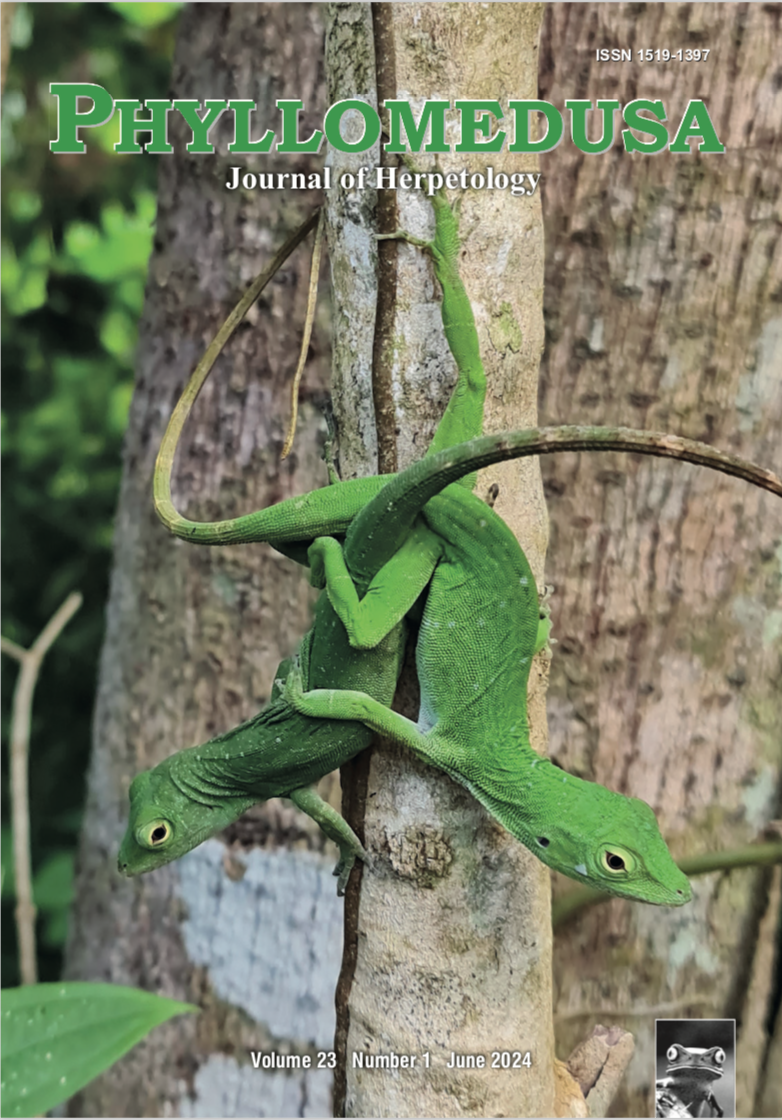Plasticity of metamorphic traits of tadpoles of Rana chensinensis (Anura: Ranidae): interactive effects of food level and water exchange
DOI:
https://doi.org/10.11606/issn.2316-9079.v23i1p43-53Keywords:
Amphibians, Chinese Brown Frog, Food availability, Growth rate, Mass at metamorphosis, Water exchange periodAbstract
In nature, ambient conditions may strongly affect morphological variation, especially in animals with complex life cycles, such as amphibians. Although food level and water exchange have a strong effect on the metamorphic traits of larvae, little is known about effects of interaction between both factors on length of larval period and size at metamorphosis. In this study, we evaluated plasticity of metamorphic traits of the Chinese brown frog (Rana chensinensis) under different combinations of food levels and water exchange. Age and mass at metamorphosis were susceptible to food level and varied with water exchange. High food levels could lead to shorter larval periods except for weekly water changes. Further, at low food levels, tadpoles with frequent water exchange (renewed every 2 days) attained a larger size than those at other treatments of water changes. The effects of water changes were dependent on food level. Our results also demonstrated that frequent water exchange and high food levels have positive effects on survival of tadpoles of Chinese brown frogs. We found a significant interaction between food level and water exchange, suggesting that this novel mechanism is selected for when frequent water exchange is likely to prove profitable when food is insufficient or environmental stresses are present.
Downloads
Downloads
Published
Issue
Section
License
Copyright (c) 2024 ESALQ-USP

This work is licensed under a Creative Commons Attribution-NonCommercial-NoDerivatives 4.0 International License.
All material originally published in Phyllomedusa belongs to Escola Superior de Agricultura Luiz de Queiroz - Universidade de São Paulo. All contents are under a license of Creative Commons BY-NC-ND.


 Impact Factor (JCR): 0.600
Impact Factor (JCR): 0.600 CiteScore: 1.0
CiteScore: 1.0